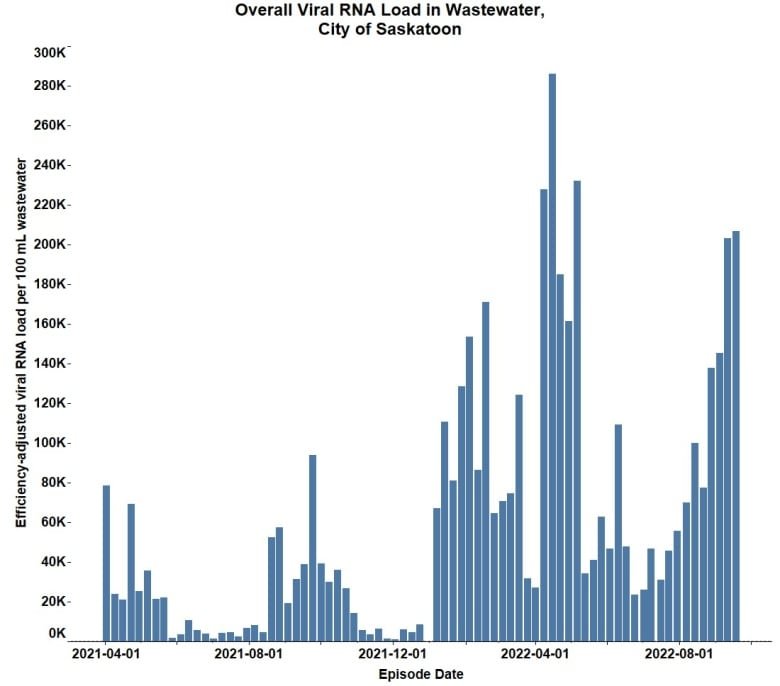Rising COVID-19 Levels Across Canada
After months of decline, SARS-CoV levels are currently on the rise across Canada, according to wastewater data.
Multiple cities across Canada have seen some of the highest wastewater levels since reporting began, indicating the fall pandemics are beginning. As more and more people are testing at home, wastewater data provides a useful early warning of incoming COVID waves.
Wastewater biosurveillance
Monitoring wastewater for human pathogens can provide an outlook on disease levels within a community. If an individual has an active infection, they may shed pathogens through their bodily fluids, skin, and hair, all of which eventually end up in sewage systems during waste elimination and cleaning. Pathogens can also be washed into sewage systems from appliances and surfaces, such as kitchen sinks and driveway cleaning.
Since disease testing typically only occurs after symptoms start showing and self-tests are not reported, biosurveillance can provide an early warning of a disease spreading within a community. High levels of wastewater contamination may indicate an incoming epidemic, allowing appropriate intervention measures to be implemented ahead of time.
As seen in the beginning stages of the pandemic, improper preparation and intervention measures can prove disastrous for public health. Therefore, early detection is key to managing cases, containing outbreaks, and reducing hospital burdens.
Implications of rising COVID levels
Rising SARS-CoV levels in multiple provinces could predict a large wave incoming throughout the country. Additionally, scientists expect entirely new variants and subvariants to emerge during the winter, with new Omicron subvariants already spreading rapidly in India, Singapore, and parts of Europe.
As this upcoming wave approaches, wastewater sampling becomes even more vital. New variants of COVID-19 can be traced to specific regions, pinpointing the origin of these mutated strains to prevent further spread. Wastewater data can also be used to predict the evolution of the SARS-CoV-2 virus, helping scientists test vaccines and treatments against potential future variants.
SARS-CoV-2 wastewater levels in Saskatoon, Saskatchewan
KRAKEN pathogen detection
To further the global biosurveillance effort, Kraken Sense has just released the KRAKEN: a real-time pathogen-sensing device that can detect bacteria and viruses in just 30 minutes. With continuous sampling and autonomous detection, the KRAKEN can identify pathogen blooms and local contamination in real-time, allowing intervention measures to be implemented ahead of time.
The automated platform can be connected inside any processing facility or in sewer mains to collect regiospecific data, only requiring WiFi/GSM network and power. Using quantitative PCR techniques, the KRAKEN can identify specific strains of viruses, including new and established variants of SARS-CoV-2. Learn more about the KRAKEN and pre-order now.
References
https://www.nature.com/articles/d41586-022-02996-y
https://paherald.sk.ca/covid-19-levels-steady-in-prince-albert-according-to-wastewater-survey/
https://www.cbc.ca/news/canada/saskatchewan/covid-19-levels-rising-wastewater-results-1.6587594
https://health-infobase.canada.ca/covid-19/wastewater/
https://www.cbc.ca/news/canada/ottawa/covid19-ottawa-cases-september-27-2022-1.6596047
science.org/content/article/big-covid-19-waves-may-be-coming-new-omicron-strains-suggest


